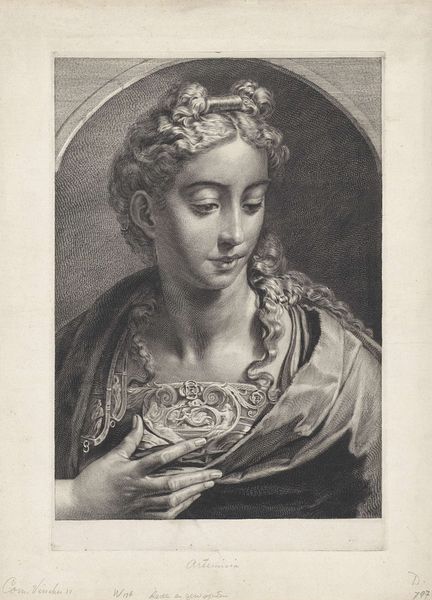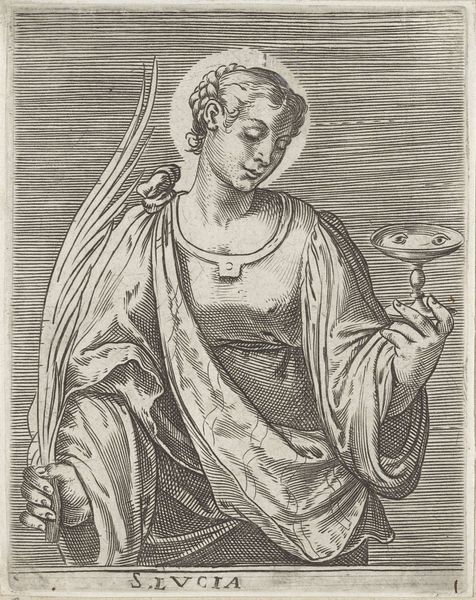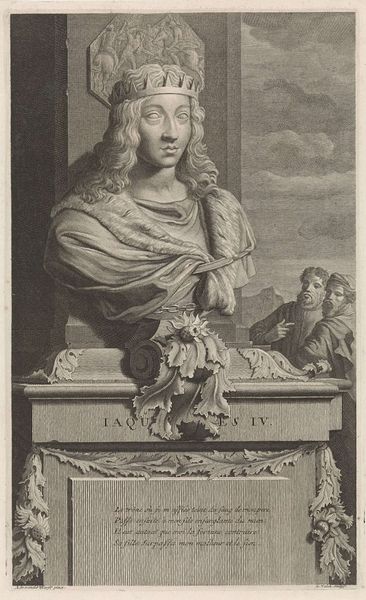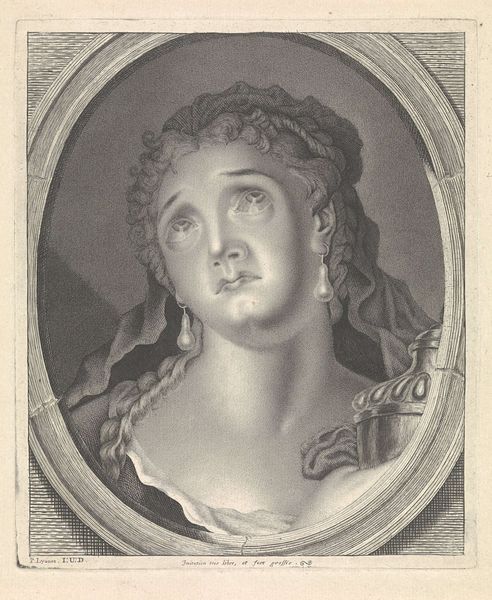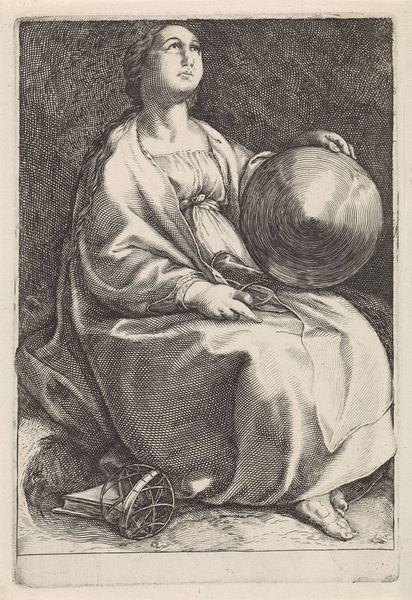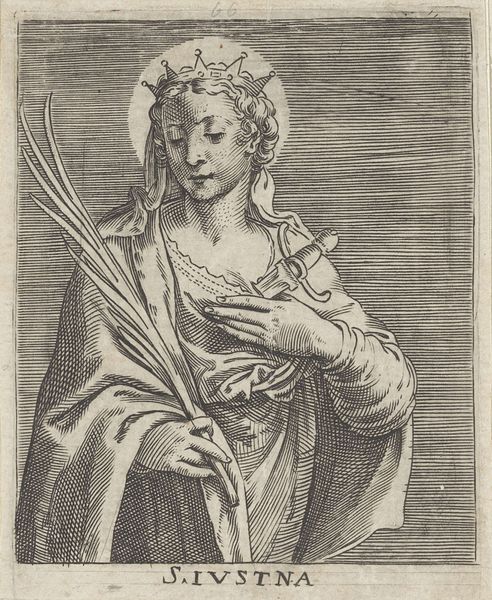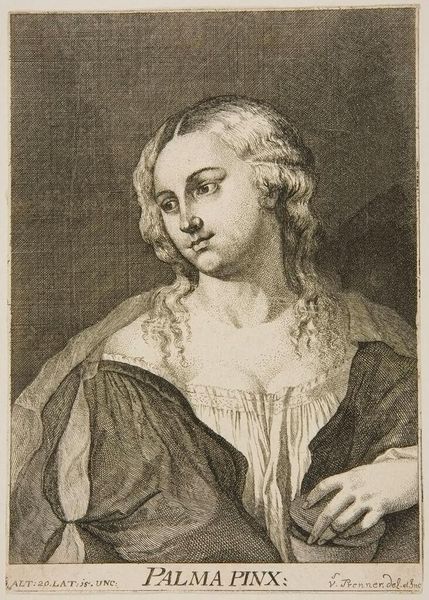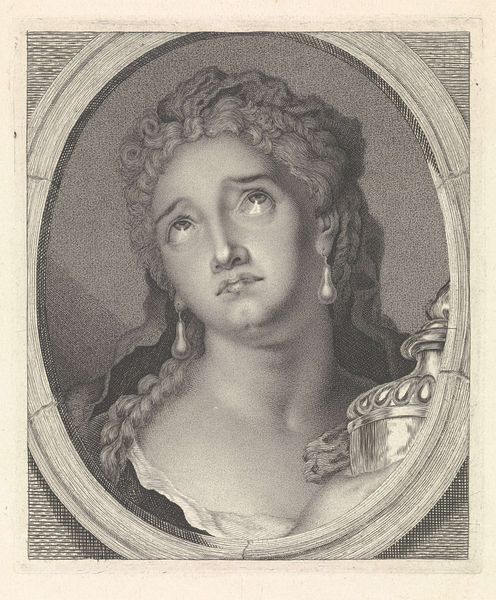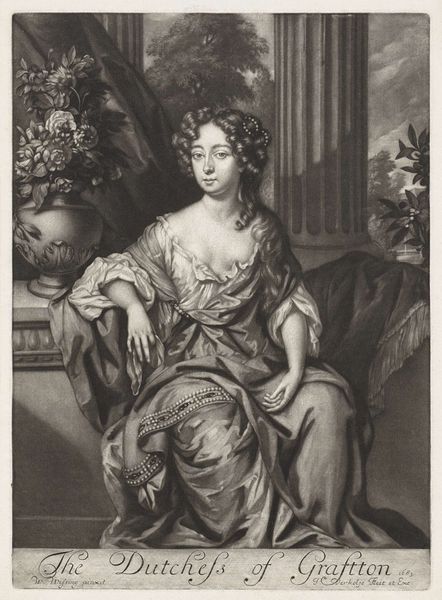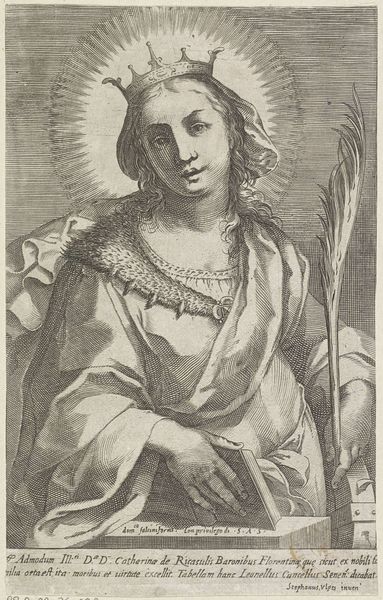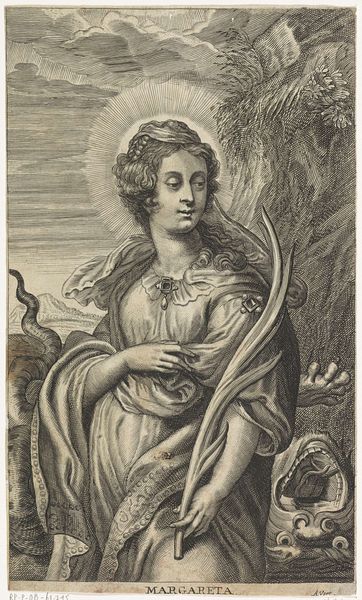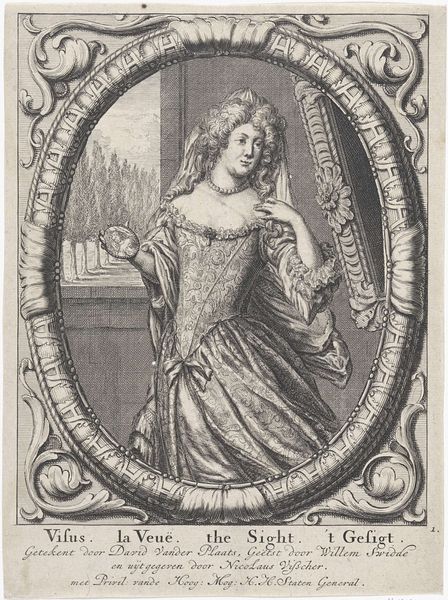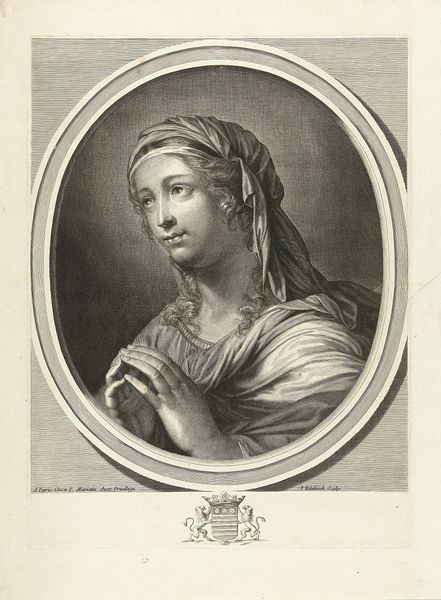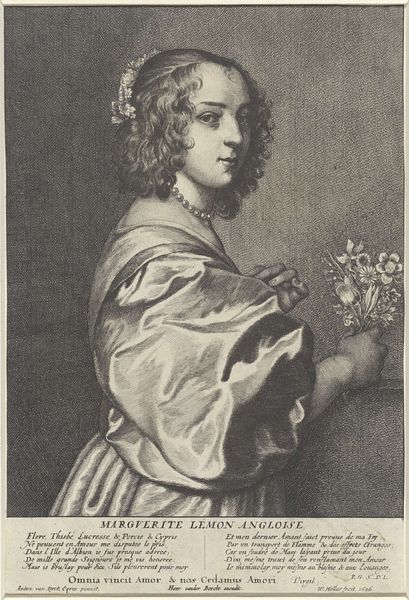
Athena, from Cabinet Reynst; Variarum imaginum a celeberrimis artificibus pictarum Caelaturae (Cabinet Reynst: Engravings of various images painted by famous artists) c. 1655 - 1658
0:00
0:00
Dimensions: 391 × 663 mm (plate); 415 × 281 mm (sheet)
Copyright: Public Domain
Cornelis Visscher created this engraving of Athena in the Netherlands, sometime in the mid-17th century. It was intended for inclusion in the ‘Cabinet Reynst,’ a publication reproducing paintings collected by the wealthy Amsterdam merchant, Jan Reynst. This image participates in a long history of representing classical subjects, like Athena, in ways that reflect the values of the present. In this case, we see Athena not as a fierce warrior, but as a beautiful, contemplative woman. This aestheticization aligns with the humanist values that were gaining prominence among the Dutch elite. They sought to associate themselves with the wisdom and refinement of classical culture. Prints like this played an important role in circulating images and ideas, contributing to the formation of artistic taste and cultural identity. To understand this work fully, we might investigate the social status of collectors like Reynst. Or, we might examine the role played by institutions like the Dutch publishing industry in shaping artistic trends. The meaning of art always depends on its social and institutional context.
Comments
No comments
Be the first to comment and join the conversation on the ultimate creative platform.
